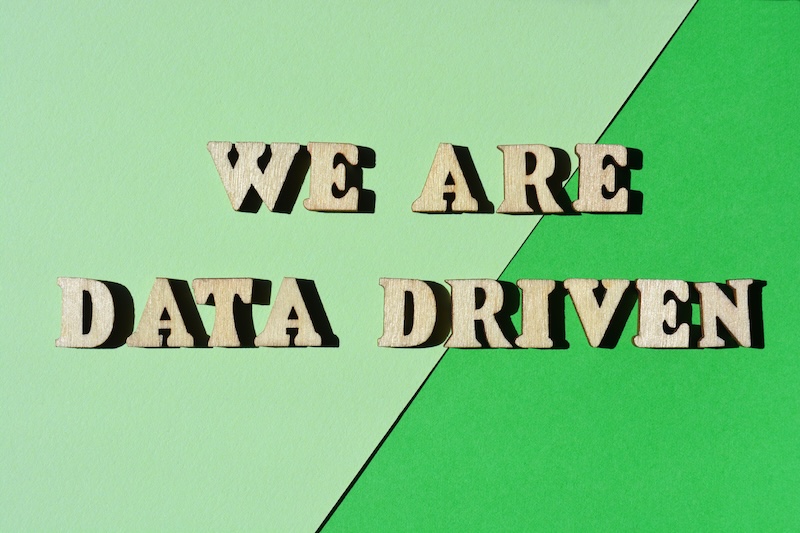Mastering Data-Driven Ad Campaigns: A Guide to Maximizing ROI

Mastering Data-Driven Ad Campaigns: A Guide to Maximizing ROI
In today's digital landscape, the ability to craft data-driven ad campaigns can make or break your marketing strategy. With the ever-increasing competition and the abundance of data available, leveraging insights to optimize your advertising efforts is imperative for achieving maximum return on investment (ROI). This guide will walk you through the essential components of a data-driven ad campaign, offering practical examples, code snippets, and actionable strategies to elevate your advertising game.
The Power of Data-Driven Advertising
Data-driven advertising is not just a buzzword; it's a crucial approach that empowers marketers to make informed decisions based on empirical evidence. By utilizing data analytics, marketers can gain a deeper understanding of their audience, optimize ad spend, and ultimately maximize ROI.
Understanding the Key Metrics
Before diving into the tactics, it's essential to understand the key metrics that measure the success of your campaigns:
- Click-Through Rate (CTR): Indicates how often people click on your ad after seeing it.
- Conversion Rate: Measures the percentage of users who take a desired action after clicking on your ad.
- Cost Per Acquisition (CPA): The average cost to acquire a customer through your ad campaign.
- Return on Ad Spend (ROAS): The revenue generated for every dollar spent on advertising.
Leveraging Audience Data
One of the cornerstones of a data-driven ad campaign is leveraging audience data to tailor your messaging and targeting. Platforms like Google Ads and Facebook Ads provide robust audience insights that can be segmented based on demographics, interests, behaviors, and more.
Example: Google Ads Audience Segmentation
To illustrate, here is a basic example of how you can segment your audience in Google Ads using Python and the Google Ads API:
from google.ads.google_ads.client import GoogleAdsClient
from google.ads.google_ads.errors import GoogleAdsException
def get_audience_segments(client):
query = """
SELECT
customer.id,
customer.descriptive_name,
user_list.id,
user_list.name,
user_list.size_for_display
FROM
user_list
WHERE
user_list.size_for_display > 1000
"""
try:
response = client.service.google_ads.search(
customer_id='INSERT_CUSTOMER_ID_HERE', query=query
)
for row in response:
print(
f"User List ID: {row.user_list.id.value}, "
f"Name: {row.user_list.name.value}, "
f"Size for Display: {row.user_list.size_for_display.value}"
)
except GoogleAdsException as ex:
print(f'Request failed with status "{ex.error.code().name}" and includes the following errors:')
for error in ex.failure.errors:
print(f'\tError with message "{error.message}".')
# Initialize a GoogleAdsClient instance and call the function
client = GoogleAdsClient.load_from_storage("google-ads.yaml")
get_audience_segments(client)
Crafting Compelling Ad Creatives
Once you have a clear understanding of your audience, the next step is crafting ad creatives that resonate with them. Data-driven insights should guide the imagery, copy, and call-to-action (CTA) used in your ads.
Best Practices for Ad Creatives
- Personalization: Use audience data to personalize ad content, making it more relevant to the viewer.
- A/B Testing: Continuously test different versions of your ad to identify the best-performing elements.
- Clear CTA: Ensure your call-to-action is clear and compelling, guiding users towards the desired action.
Example: A/B Testing with Facebook Ads
Facebook Ads Manager provides a built-in tool for conducting A/B tests, allowing you to compare different ad creatives, placements, and audiences. Here's a simple example to illustrate A/B testing for ad creatives:
{
"name": "A/B Test - Ad Creative",
"objective": "LINK_CLICKS",
"status": "ACTIVE",
"adsets": [
{
"name": "Ad Set A",
"audience": "INSERT_AUDIENCE_ID_HERE",
"creatives": [
{
"image_url": "https://example.com/image_a.jpg",
"headline": "Discover the Best Deals",
"cta": "Shop Now"
}
]
},
{
"name": "Ad Set B",
"audience": "INSERT_AUDIENCE_ID_HERE",
"creatives": [
{
"image_url": "https://example.com/image_b.jpg",
"headline": "Unbeatable Prices Await",
"cta": "Explore"
}
]
}
]
}
Optimizing Ad Spend with Predictive Analytics
Predictive analytics can be a game-changer in optimizing ad spend. By using historical data to forecast future outcomes, marketers can allocate budgets more effectively and identify high-performing channels.
Implementing Predictive Modeling
Here’s how you can implement a basic predictive model using Python and scikit-learn to forecast ad performance:
from sklearn.model_selection import train_test_split
from sklearn.linear_model import LinearRegression
import pandas as pd
# Load your dataset
data = pd.read_csv('ad_performance.csv')
# Features and target variable
X = data[['impressions', 'clicks', 'spend']]
y = data['conversions']
# Split the data into training and testing sets
X_train, X_test, y_train, y_test = train_test_split(X, y, test_size=0.2, random_state=42)
# Create and train the model
model = LinearRegression()
model.fit(X_train, y_train)
# Make predictions
predictions = model.predict(X_test)
# Evaluate the model
print(f"Model Coefficients: {model.coef_}")
print(f"Intercept: {model.intercept_}")
Actionable Takeaways
- Harness Audience Data: Use data analytics to understand and segment your audience, tailoring your ads for maximum relevance and impact.
- Iterate with A/B Testing: Continuously test and optimize your ad creatives to discover what resonates best with your audience.
- Leverage Predictive Analytics: Use predictive modeling to optimize your ad spend and forecast performance, ensuring every dollar is well spent.
- Monitor and Adjust: Regularly monitor campaign performance using key metrics and adjust strategies as needed to maintain optimal ROI.
Conclusion and Next Steps
Crafting data-driven ad campaigns is not a one-time effort but a continuous process of analysis, testing, and optimization. By leveraging data analytics, audience insights, and predictive modeling, you can transform your advertising strategy into a powerful ROI-generating machine. Start by implementing the techniques and strategies outlined in this guide, and continually refine your approach as you gather more data and insights.
For further reading and resources, consider exploring advanced data analytics courses, joining marketing forums, and staying updated with the latest industry trends and tools. The journey towards mastering data-driven ad campaigns is an ongoing one, but the rewards are well worth the effort.